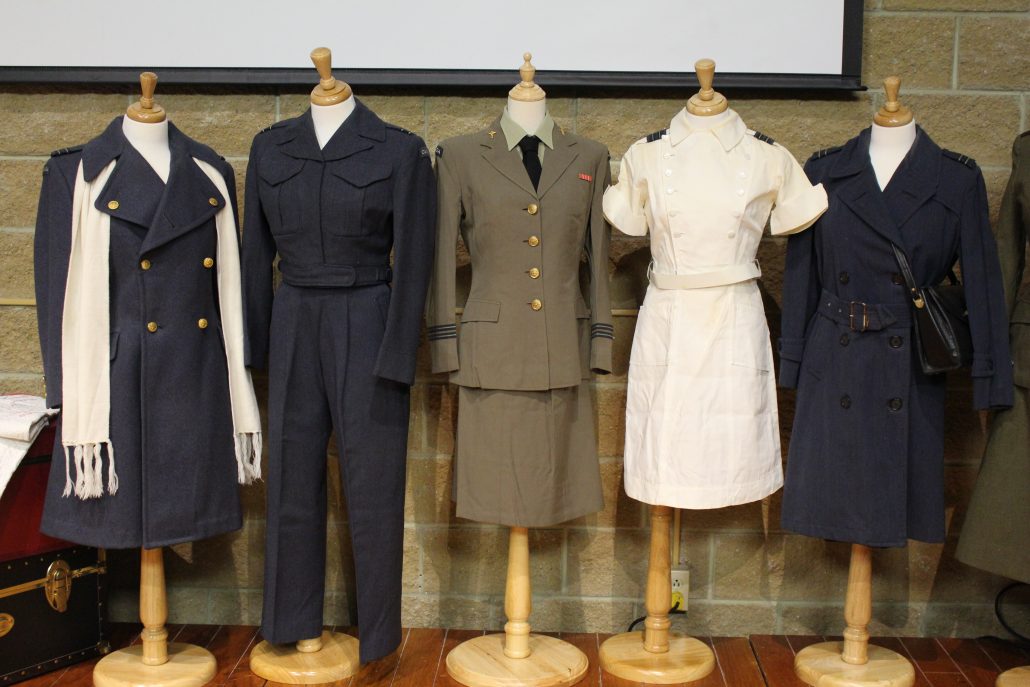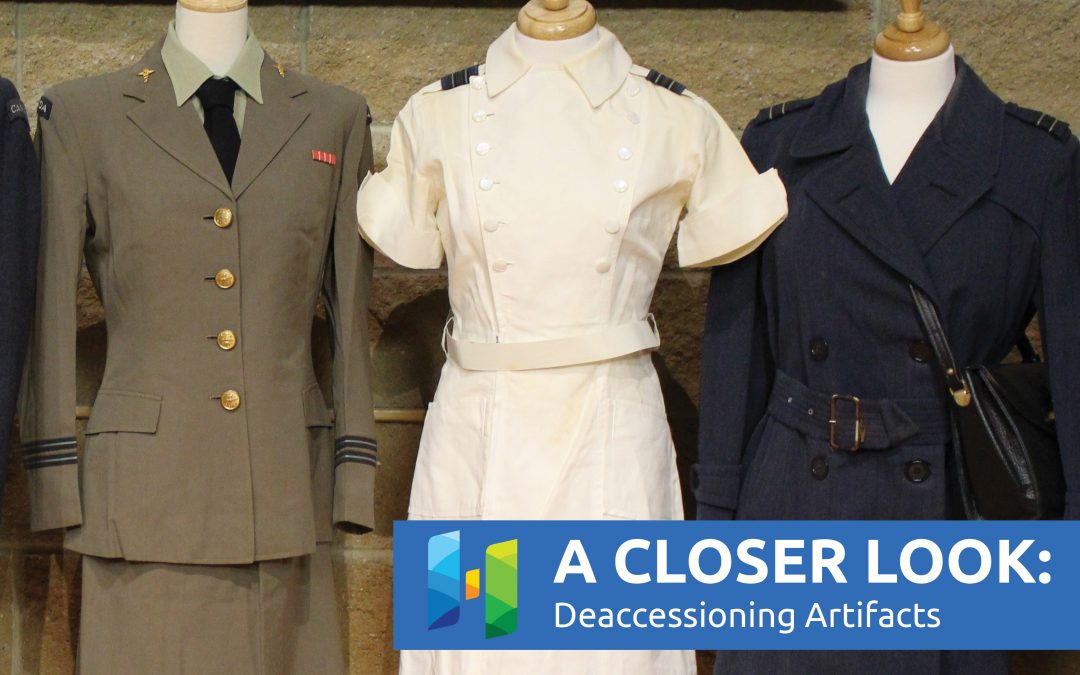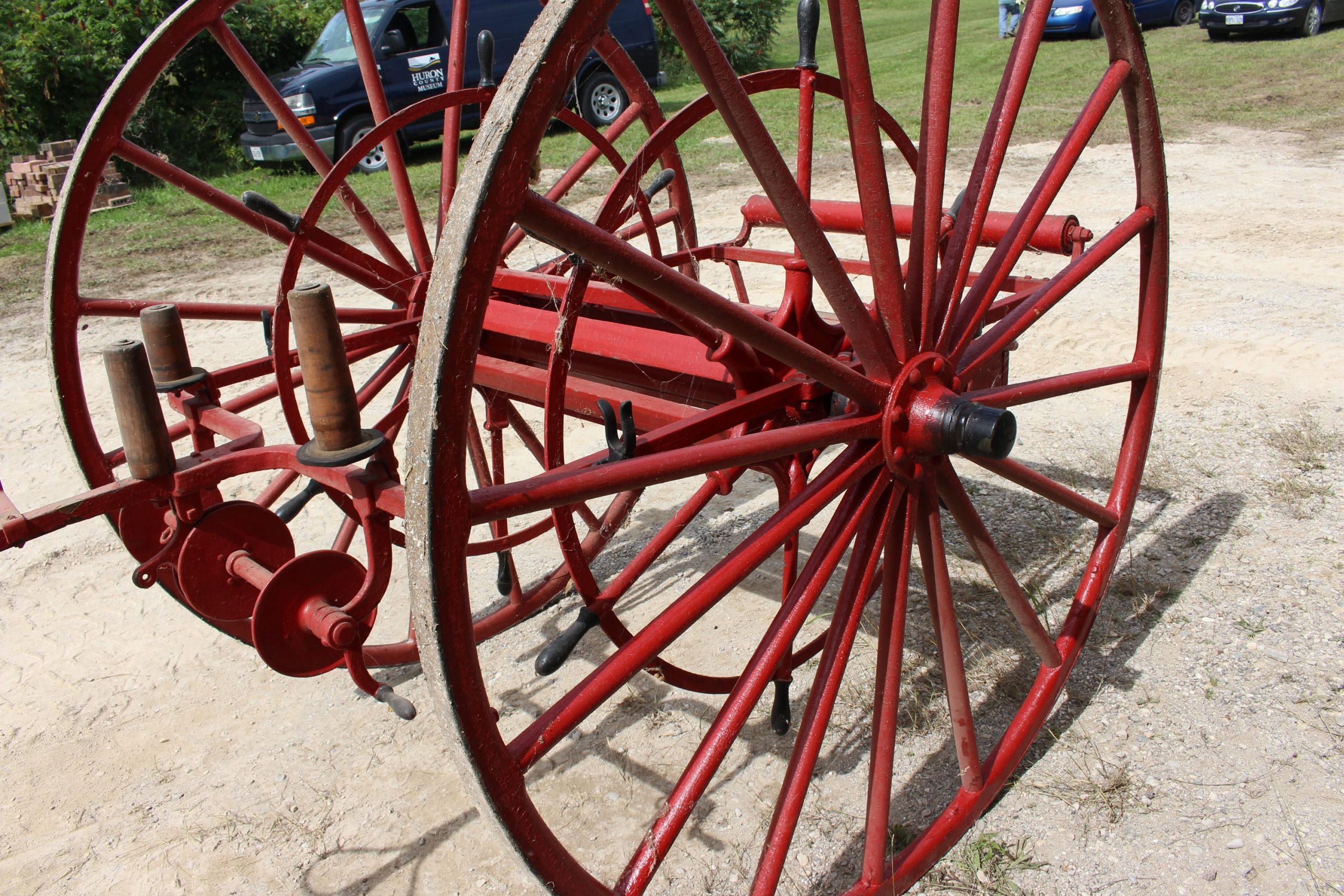Take a closer look at the Huron County Museum & Historic Gaol and its collections as staff share stories about some well-known and some not-so-well-known features, artifacts, and more. In the last of a three-part series, Registrar Patti Lamb takes a closer look at deaccessioning artifacts from the Museum’s collection. Read Part 1 on Museum’s Secret Codes and Part 2 on Collecting at the Huron County Museum.
The Collection at the Huron County Museum is quite large and began with the collection of Joseph Herbert (Herbie) Neill. When Mr. Neill opened the Huron County Pioneer Museum, he brought his own collection and many people continued to donate more items regularly to the Museum. The Museum has actively been collecting artifacts since 1951. In the early days, the collections mandate was greater and objects came into the Collection from all over Ontario and in some cases other parts of Canada. Since that time, there has been an increase in the number of County and Municipal museums, as well as independent museums with specific collections focus.
Presently, many museums are focusing on refining their collections. Previous collecting without a mandate has resulted in museums having a lack of storage space, overcrowding, and items outside of their current mandates. Museums have been encouraged to have a Collections Policy and Collecting Mandate. In the case of the Huron County Museum, items coming into the Collection must have historical relevance to Huron County. Part of the Collections Policy must also be a policy on deaccessioning.
Deaccessioning is the process to officially remove an item from the listed holdings of a museum. It is never taken lightly and has very strict policies and procedures associated with it. Rules and regulations from the Ontario Ministry of Heritage, Sport, Tourism and Culture, as well as County and Museum policies must all be adhered to. The Huron County Museum has actively started to look at deaccessioning as a way to refine the Collection to be more clearly Huron County focused and to make the best use of current storage space.

These uniforms were recently deaccessioned from the Museum’s collection and transferred to the Bruce County Museum, as they were worn by Captain Shirley M. Robinson CD, from Kinloss Township, who was a Nursing Sister in the Canadian Forces.
The two main factors for deaccession are non-Huron County relevance or condition. If while searching the database, we find an artifact that was manufactured or used somewhere other than Huron County it could be considered for deaccession. However, place of manufacture is not the only factor. For example, a plow or coat that was manufactured somewhere else but was used to plow the fields for 40 years in Colborne Township, or worn by a women from Exeter on her wedding day, makes it relevant to Huron County. If an artifact is in poor condition, and as such could cause damage to other artifacts or effect the safety of staff and visitors, it would also be considered for deaccession. Mr. Neill’s original collection would not be included in the deaccession process.
Occasionally, the Museum will be offered an artifact that has a strong story or provenance but is similar to several others already in the Collection. In this case, the Registrar will do research into the Collection by searching the database and files to find out the relevance of the other similar objects. If there are similar objects with no history, relevance, or in poor condition they may be considered for deaccession making room for the new object.
Once an object has been identified for potential deaccession, the Registrar will prepare a report to be presented to the Huron County Museum Collections Committee. This report includes any known information about the artifact and reasons why it should be deaccessioned. If the Collections Committee also finds that the artifact should be deaccessioned, the report is forwarded to County Council for approval. If County Council approves, then the deaccessioning process can begin. The object will then go through the following options until the appropriate one is found:
- Transferred to the Huron County Museum & Historic Gaol “hands on” educational collection.
- Offered as an exchange, gift or private sale to other public museums, or similar public institutions.
- In the event that the artifact is not disposed of to the Canadian museum community, it may be deaccessioned through public sale. All monies obtained through the sale of deaccessioned objects will be used only for collection acquisition and care.
- As a final option, the artifact will undergo intentional destruction before witnesses by designated museum personnel or disposed of in a fashion (such as to a scrap metal dealer) which ensures it cannot be reconstructed in any way.
Signed paperwork and photographic documentation for all the above options is required and added to the object record. In most cases, option number two is the one that is used. The Registrar contacts the appropriate museum in the area that is most relevant to the object to discuss the transfer of the object. Since 2013 to the end of 2020, 439 objects have been transferred to other museums or institutions, returning them to the geographical areas where they truly belong and thus allowing the local residents and tourists of the area to enjoy, learn, and discover them.


